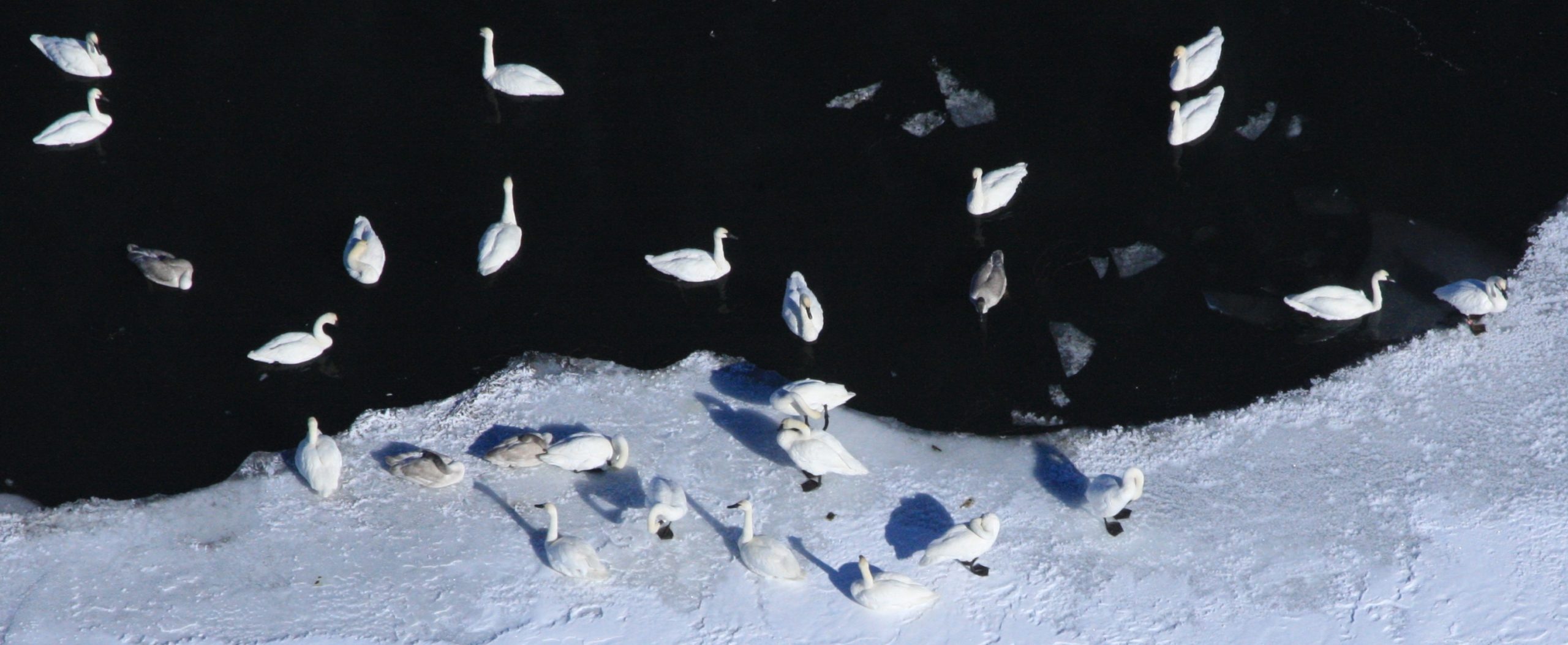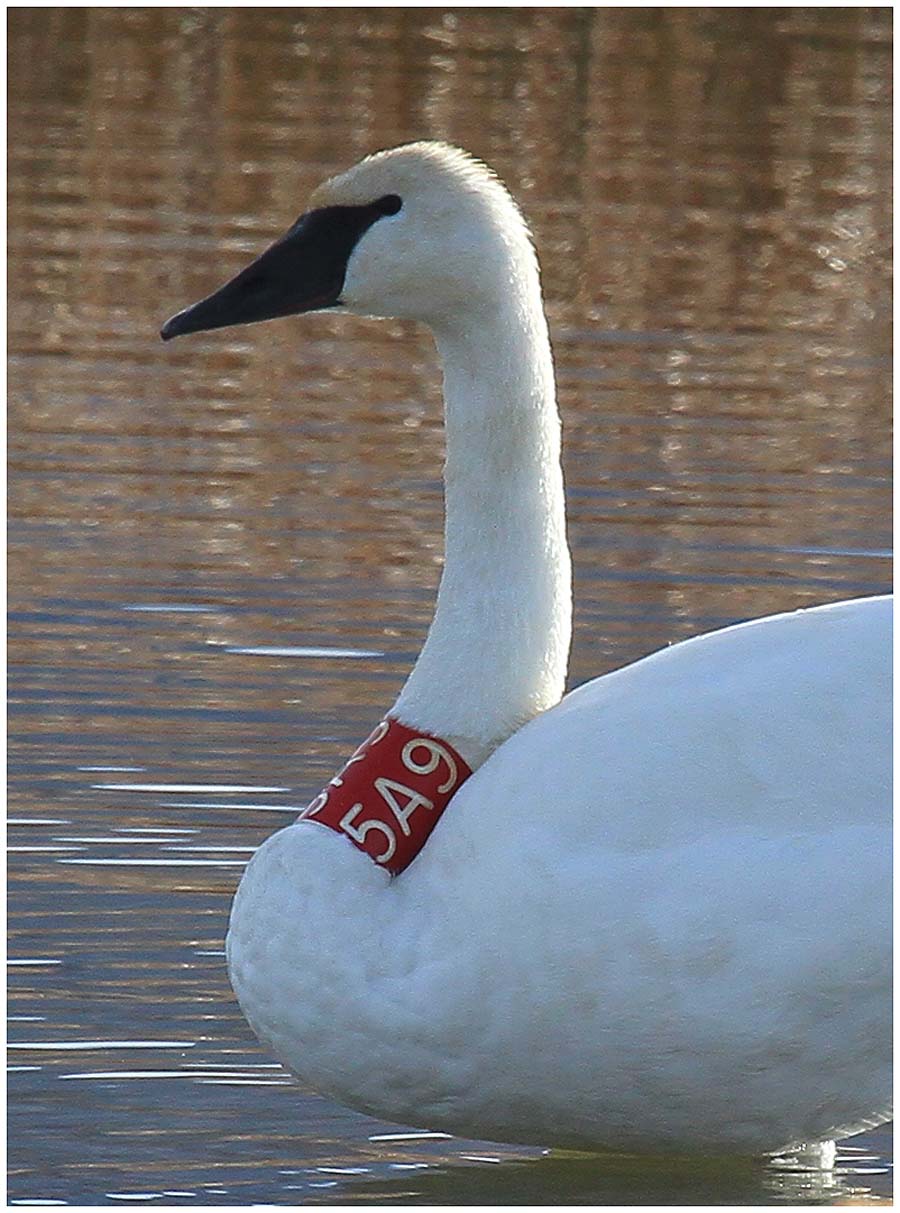Blackfoot Valley Trumpeter Swans may have left our watershed for the winter, but that doesn’t mean they have been entirely out of sight. We’ve received notice of some great observations of “our” swans in more southern locations since we last saw them in the Blackfoot.
In late November, an observer in Idaho reported seeing Swan 5A9 at a pond along a road near Challis, Idaho (approximately 185 miles south of where she was released in 2011 and spent the summer of 2012, near Ovando).
Three weeks later, on November 19, 5A9 was sighted in a flooded field just south of Rexburg ID (about 125 miles southeast of where she had been sighted near Challis). And we received yet another sighting of 5A9, on December 30, on the Henry’s Fork of the Snake River just several miles north of Rexburg. We haven’t had any reports of 5A9 since. Did she settle down in the Rexburg/St. Anthony’s area for the winter? Or did she continue her wanderings in search of a favorite winter home? At the very least, we hope to see 5A9 again this spring on a local wetland.
Go to the Adopt-A-Swan home page at http://www.blackfootswans.org/SwanProject/home to see a map of 5A9’s travels and other recent swan locations!
Other winter sightings include one of our Blackfoot swan families and others in the Ruby River valley near Sheridan, Montana on January 22. In a group of 20 swans (15 adults and 5 cygnets) were 0A6, (who was released in 2010 and paired with 0A5 in 2012) and 3P6 (one of the nesting pair that successfully raised cygnets the past 2 years). Also in the group were 3 swans with small metal leg bands only; these were likely Blackfoot birds that had lost their red collars and leg bands, and may have included the mates of 0A6 and 3P6.
At least some of the cygnets were probably from the nests in the Blackfoot in 2012 (the cygnets aren’t marked in any way, so we can’t be 100% sure of their identity once they begin to fly, but the fact that they were with at least one of the nesting adults is a good clue).

Swans 2A3, 2A5, 2A6, and 7A5 (all released in the Blackfoot last summer) were also seen near Sheridan for most of the month of February. This area has some warm springs that maintain open water in some of the ponds and wetlands along the river even when they would otherwise be iced over.
Finally, we had one sighting of a swan with a red leg band on Hebgen Reservoir near West Yellowstone on February 11. This was interesting because the band was spotted from an airplane by a pilot doing a survey! Can you see the red and white band in the photo below that he took? You can click on the photo to enlarge it.

Swans at Hebgen Reservoir
If you look very carefully at the photo, you may be able to see the red and white band on the swan on the far right.
I expect to begin seeing or hearing about swans back in the Blackfoot any day now. Last year our first spring sighting of returning Blackfoot Trumpeters was on March 4. So if you are in the Blackfoot, please look carefully at open water on ponds and wet fields as you go by them or work near them; you may see our first big white “snowbirds” returning home!

